Exhibit

Referring to the exhibit, which two additional steps should you lake to fully configure NSR? (Choose two.)
What are three types of MPLS routers? (Choose three.)
Which two statements are correct when using LDP? (Choose two.)
Exhibit button
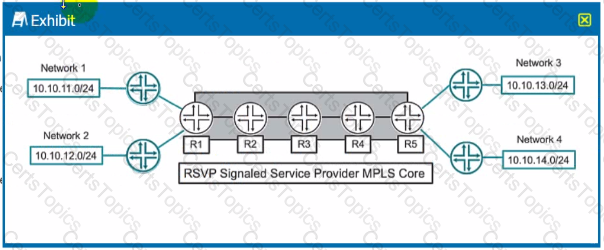
Which two statements are correct about the service provider MPLS network shown in the exhibit? (Choose two.)
You are asked to create connections between routing instances on the same Junos device and route between the connected Instances. What are two ways to accomplish this task? (Choose two.)
What Is a key differentiator of generate routes from aggregate routes?
Which BGP message type is used to re-advertise routes that have already been sent to a peer and acknowledged using TCP?
Exhibit.
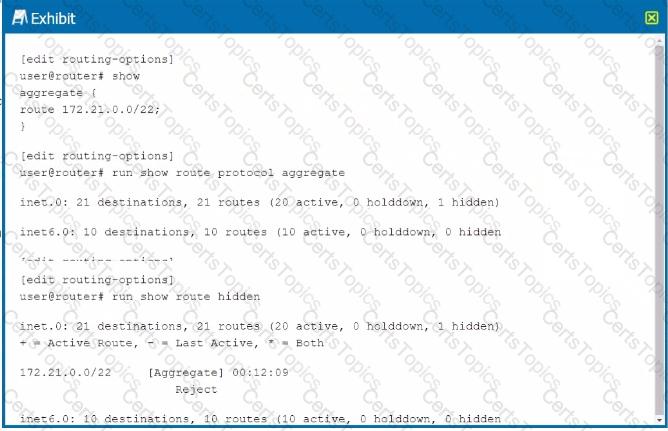
Referring to the exhibit, you have configured an aggregate route that represents the 172.21.0.0/24, 172.21.1.0/24, and 172.21.2.0/24 networks. However, when you view the routing table, your new route hidden.
Which action would you perform to determine the problem?
You are implementing traffic engineering in your MPLS network. You must ensure that the MPLS routes are used to traverse your network. Your solution should not affect IGP routes in your route tables.
In this scenario, which traffic engineering setting will accomplish this behavior?
Exhibit

Referring to the exhibit, how do you verify the status of the tunnel from R1?
You are troubleshooting two OSPF routers that have an adjacency that remains in the ExStart state.
What would cause this problem?
Exhibit
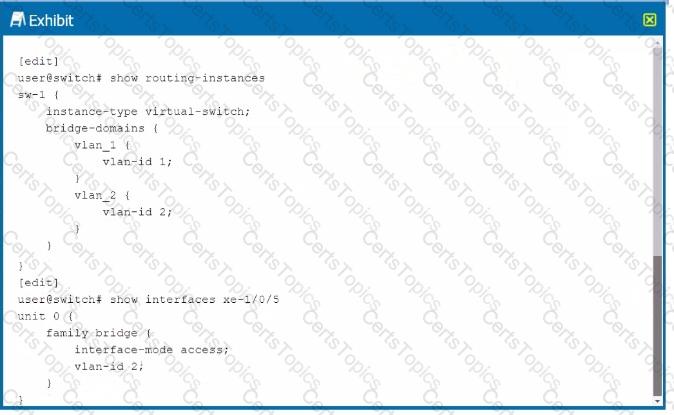
You are asked to assign interface xe-1/0/5 to a virtual switch.
What must be accomplished to complete the configuration?
You want to see a detailed list of all established BGP sessions. In this scenario, what would be a valid command to accomplish this task?
Which BGP attribute Is used to detect touting loops?
Which new field is added to an IPv6 header as compared to IPv4?
Exhibit
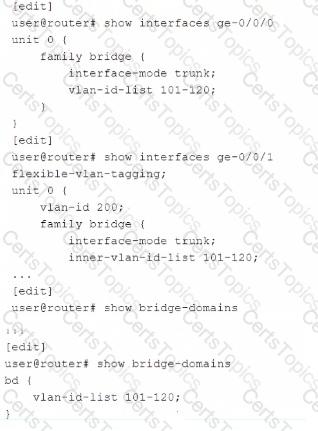
Referring to the exhibit, which two statements are correct? (Choose two.)
Which two protocols are capable of distributing labels for segment routing? (Choose two.)
Exhibit
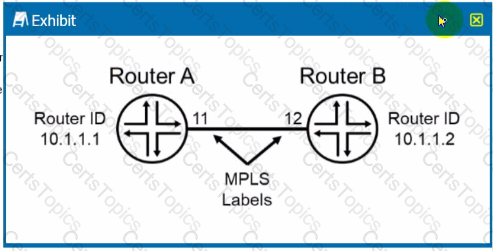
The routers shown in the exhibit ate configured for segment routing.
In this scenario, what is the adjacency SIO that Router B advertises to Router A?
What are two types of SlDs used in segment touting? (Choose two.)
Exhibit
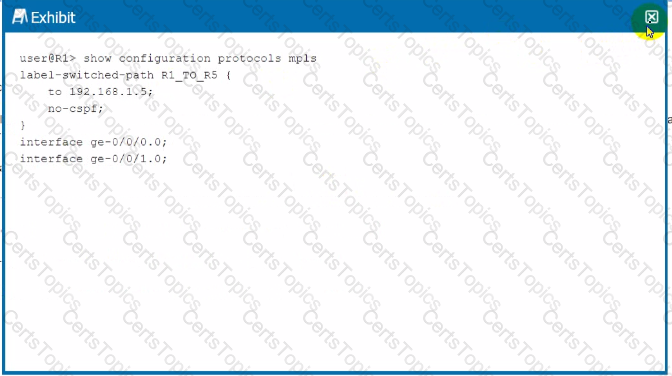
You have an established LSP between your R1 and R5 devices using the configuration shown in the exhibit. You are asked to ensure that MPLS labels are used to forward traffic by all devices within the LSP.
Which action will accomplish this behavior?
You are bringing a new network online with three MX Series devices enabled for STP. No root bridge priority has been configured. Which statement is true in this scenario?
Which two LSA types are permuted in OSPF totally stubby areas? (Choose two.)
Exhibit
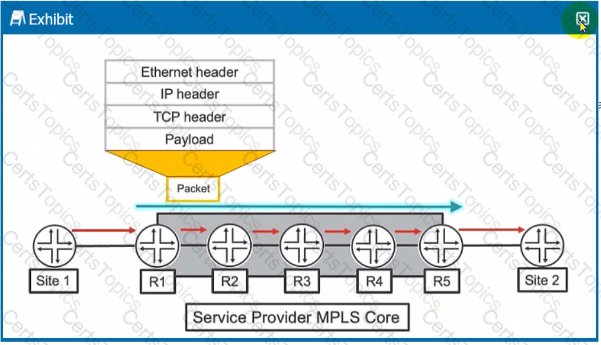
Which two statements ate correct about the actions taken as the packet traverses the service provider MPLS network from Site 1 to Site 2 as shown in the exhibit? (Choose two.)
Interface ge-0/0/0.0 connecls yout network to your ISP. You want to advertise this interface address as an Internal route In OSPF without creating a neighbor with your ISP.
In this scenario, how is this task accomplished?